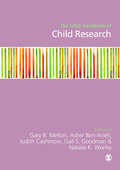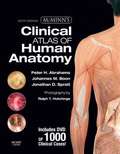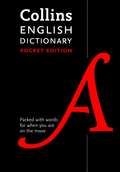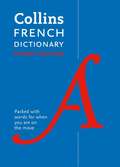- Table View
- List View
The SAGE Handbook of Child Research
by Dr Gary B. Melton Gail S. Goodman Mr Asher Ben-Arieh Ms Judith Cashmore Ms Natalie K. Worley"It is refreshing to see a book such as this which is both broad in its conceptualization of the field of child research and deep in its focus. The volume's editors are paragons of awareness when it comes to the need for interdisciplinary research and theory to illuminate the lives and experience of children." - James Garbarino, Loyola University Chicago "Covers a satisfying and unprecedentedly wide range of research relating to childhood. The contributors include many eminent international scholars of childhood, making the book a valuable resource for child researchers. Child advocates will also find the book to be invaluable in their efforts to improve children’s well-being, and to change policies and practices for the better." - Anne Smith, University of Otago "A really scintillating collection that will provide a lasting perspective on child studies - stimulating and comprehensive!" - Jonathan Bradshaw, University of York In keeping with global changes in children's social and legal status, this Handbook includes examination of children as family members, friends, learners, consumers, people of faith, and participants in law and politics. The contributors also discuss the methodological and ethical requirements for research that occurs in natural settings and that enables children themselves to describe their perspective. The book is divided into three parts: Part I: Setting-Specific Issues in Child Research Part II: Population-Specific Issues in Child Research Part III: Methods in Research on Children and Childhood
Ethics in Qualitative Research
by Tina Miller Maxine Birch Julie Jessop Dr Melanie MauthnerThis fresh, confident second edition expands its focus on the theoretical and practical aspects of doing qualitative research in light of new ethical dilemmas facing researchers today. In a climate of significant social and technological change, researchers must respond to increased ethical regulation and scrutiny of research. New sources, types of data and modes of accessing participants are all challenging and reconfiguring traditional ideas of the research relationship. This engaging textbook explores key ethical dilemmas - including research boundaries, informed consent, participation, rapport and analysis - within the context of a rapidly changing research environment. The book effectively covers the ethical issues related to the data collection process, helping readers to address the ethical considerations relevant to their research. This fully updated new edition: - Maps the changing and increasingly technology-reliant aspects of research relationships and practices - Provides researchers with guidance through practical examples, enabling those engaged in qualitative research to question and navigate in ethical ways This book is essential reading for all those engaged in qualitative research across the social sciences.
Clinical Atlas Of Human Anatomy (PDF)
by Peter H. Abrahams Jonathan D. Spratt Johannes M. Boon Ralph T. HutchingsMap out all of the key structures of the human body with examples of real human dissections. . . and easily place them in a clinical context! This popular atlas incorporates an unrivalled collection of cadaveric, osteological, and clinical images with surface anatomy models, interpretive drawings, orientational diagrams, and diagnostic images - emphasizing a well-rounded visual perspective of a real human body as seen by modern doctors. The 6th Edition offers new endoscopic images, 250 new dissection photos (including eight pages of new dissections on lymphatics), and 300 new clinical thumbnails. A bonus DVD - new to this edition - includes 1,000 additional photos not found in the text, as well as questions and answers that accompany each section from the book. Displays X-ray, MR, and CT images next to corresponding dissections, showing how to recognize anatomic structures in diagnostic images. Presents interpretive drawings to help you differentiate between structures with a similar appearance (i. e. , veins, arteries, and nerves). Offers orientational diagrams that make it easier to relate the dissections in the text to real experiences in the lab. Provides an unobstructed view of the artwork by using a numbered labeling system, which also allows you to self-test by covering up the key and identifying each numbered structure yourself. Presents 300 new clinical thumbnails - with relevant clinical notes and additional images on the DVD - that emphasize the clinical relevance of images depicted and demonstrate their clinical relevance. Offers 250 new dissection photos that enhance the overall quality and scope of the images shown #65533; eight pages of new dissections on lymphatics #65533; 50 new illustrations reflecting the increasing use of diagnostic imaging in anatomy teaching #65533; and 20 new endoscopic images to reinforce memorization of structures. Features a bonus DVD with 1,000 clinical photos not found in the text. . . more information on clinical correlations. . . and questions and answers that accompany each section of the book.
Symbols & Trademarks (Tactile)
by Adrian FarnsworthThis is a four-page document showing commonly-used symbols and trademarks. There are four on page one, three on each of pages two and three, and two on page four. The Woolmark on page two is a registered trade mark of The Woolmark Company and the Golden Arches logo on page four is a registered trade mark of the McDonald's Corporation.
United Nations Logo (Tactile)
by Adrian FarnsworthThis is a tactile image of the United Nations logo. At the centre of the page is an image of the Earth seen from above showing its lines of latitude and longitude. It is surrounded by two olive branches representing peace. The shapes of the Earths land masses have been omitted in this tactile version.
Collins English Dictionary (PDF)
by Collins Dictionaries StaffThe most up-to-date and information-packed dictionary of its size available. With spelling, grammar and pronunciation help, plus a practical writing guide, the Pocket Dictionary gives you all the everyday words you need âe" at your fingertips. Up-to-date language coverage along with practical guidance on effective English for everyday use. The text is compiled using the latest information on current English from Collins Corpus âe" our unique and constantly updated 4. 5-billion-word database âe" ensuring the most up-to-date language coverage available. And, with all entry words and spelling forms highlighted in colour and clear, modern definitions, you can be sure to find all the information you need in the quickest time possible. 85,000 words, meanings, and phrases Collins have been pioneers in dictionary publishing since 1819. We are proud to offer an extensive range of dictionaries in multiple formats and languages for all leisure, travel and educational needs.
Collins French Dictionary (PDF)
by Collins Dictionaries StaffA modern French Dictionary offering excellent coverage of today's French language, culture and usage. Clear presentation and colour make it easy to use and its handy format and durability make it your ideal companion at home, school or on your travels. Features include: âe¢ All the latest words in both languages, such as downloadable, Wi-Fi in English, and empreinte écologique, podcaster in French âe¢ Full GCSE coverage âe¢ An in-depth and up-to-date supplement with information about France, its people and its language to help you take your learning to the next level âe¢ Help with French verbs âe¢ Clear, colour layout, useful examples, language and cultural notes Designed to give travellers, business people and the general user alike all the information they need in a portable, hard-wearing format. It includes all the latest words reflecting changes in modern lifestyle, as well as all the features you would expect from a Collins dictionary: an easy-to-read colour layout, special treatment of key words such as can, that, mettre, que, notes about life in French-speaking countries and warnings on commonly confused words. An in-depth and up-to-date supplement helps you to develop your knowledge of French and your confidence in the language, with a section on common translation difficulties to guide you. There is information on pronunciation and improving your fluency, as well as the words and phrases you will need in different situations, like sending an email or making a phone call. The supplement also gives you an insight into France, its people and other French-speaking countries. Verb tables show all verb forms for the most common French verbs and give examples of how these are used.
DOT symbols: bus, ground transportation (Large Print)
by RnibOn this page there are two US Department of Transport (DOT) pictograms used for signage and travel information: a bus pictogram and a ground transportation pictogram. There is a locator dot shown, which will be at the top left of the page when the image is the correct way up. The bus pictogram is at the top centre of the page. It shows a stylised image of a single-decker bus seen from the front. At the top of the image are the buses roof and the destination sign. Down the page is the front widow, two circles representing the front lights and further down, the front wheels. At the bottom centre of the page is the ground transportation pictogram. It consists of an image of a taxi seen from the front on the left and a smaller image of a bus as described above, to the right. At the top of the taxi image is its taxi sign and below this are the front window, two headlights and two front wheels.
DOT symbols: bus, ground transportation (UEB Uncontracted)
by RnibOn this page there are two US Department of Transport (DOT) pictograms used for signage and travel information: a bus pictogram and a ground transportation pictogram. There is a locator dot shown, which will be at the top left of the page when the image is the correct way up. The bus pictogram is at the top centre of the page. It shows a stylised image of a single-decker bus seen from the front. At the top of the image are the buses roof and the destination sign. Down the page is the front widow, two circles representing the front lights and further down, the front wheels. At the bottom centre of the page is the ground transportation pictogram. It consists of an image of a taxi seen from the front on the left and a smaller image of a bus as described above, to the right. At the top of the taxi image is its taxi sign and below this are the front window, two headlights and two front wheels.
DOT symbols: car rental, restaurant (Large Print)
by RnibOn this page there are two US Department of Transport (DOT) pictograms used for signage and travel information: a car rental pictogram and a restaurant pictogram. There is a locator dot shown, which will be at the top left of the page when the image is the correct way up. The car rental pictogram is at the top left of the page. It comprises of a silhouette image of a door key with its blade to the right at the top. Down the page is a stylised image of a car seen from the front. At the top of the car is the windscreen and down the page are the two headlights and two wheels. The restaurant symbol is at the bottom right of the page. It shows a stylised image of a knife and fork. They are seen from above with the forks prongs and the knifes blade to the top of the image. The sharp cutting edge of the knife is to the left.
DOT symbols: bus, ground transportation (UEB Contracted)
by RnibOn this page there are two US Department of Transport (DOT) pictograms used for signage and travel information: a bus pictogram and a ground transportation pictogram. There is a locator dot shown, which will be at the top left of the page when the image is the correct way up. The bus pictogram is at the top centre of the page. It shows a stylised image of a single-decker bus seen from the front. At the top of the image are the buses roof and the destination sign. Down the page is the front widow, two circles representing the front lights and further down, the front wheels. At the bottom centre of the page is the ground transportation pictogram. It consists of an image of a taxi seen from the front on the left and a smaller image of a bus as described above, to the right. At the top of the taxi image is its taxi sign and below this are the front window, two headlights and two front wheels.
DOT symbols: car rental, restaurant (UEB Contracted)
by RnibOn this page there are two US Department of Transport (DOT) pictograms used for signage and travel information: a car rental pictogram and a restaurant pictogram. There is a locator dot shown, which will be at the top left of the page when the image is the correct way up. The car rental pictogram is at the top left of the page. It comprises of a silhouette image of a door key with its blade to the right at the top. Down the page is a stylised image of a car seen from the front. At the top of the car is the windscreen and down the page are the two headlights and two wheels. The restaurant symbol is at the bottom right of the page. It shows a stylised image of a knife and fork. They are seen from above with the forks prongs and the knifes blade to the top of the image. The sharp cutting edge of the knife is to the left.
DOT symbols: car rental, restaurant (UEB Uncontracted)
by RnibOn this page there are two US Department of Transport (DOT) pictograms used for signage and travel information: a car rental pictogram and a restaurant pictogram. There is a locator dot shown, which will be at the top left of the page when the image is the correct way up. The car rental pictogram is at the top left of the page. It comprises of a silhouette image of a door key with its blade to the right at the top. Down the page is a stylised image of a car seen from the front. At the top of the car is the windscreen and down the page are the two headlights and two wheels. The restaurant symbol is at the bottom right of the page. It shows a stylised image of a knife and fork. They are seen from above with the forks prongs and the knifes blade to the top of the image. The sharp cutting edge of the knife is to the left.
DOT symbols: coat check, baggage lockers (UEB Contracted)
by RnibOn this page there are two US Department of Transport (DOT) pictograms used for signage and travel information: a coat check symbol and a baggage lockers pictogram. There is a locator dot shown, which will be at the top left of the page when the image is the correct way up. The coat check symbol is at the top of the page. It is a stylised image of a coat hanger with its hook at the top of the image. The baggage lockers pictogram is at the bottom of the page. At the top of the pictogram is a key with its blade to the right and below this is a rectangle representing a locker. This has a stylised image of a suitcase inside it.
DOT symbols: coat check, baggage lockers (UEB Uncontracted)
by RnibOn this page there are two US Department of Transport (DOT) pictograms used for signage and travel information: a coat check symbol and a baggage lockers pictogram. There is a locator dot shown, which will be at the top left of the page when the image is the correct way up. The coat check symbol is at the top of the page. It is a stylised image of a coat hanger with its hook at the top of the image. The baggage lockers pictogram is at the bottom of the page. At the top of the pictogram is a key with its blade to the right and below this is a rectangle representing a locker. This has a stylised image of a suitcase inside it.
DOT symbols: coat check, baggage lockers (Large Print)
by RnibOn this page there are two US Department of Transport (DOT) pictograms used for signage and travel information: a coat check symbol and a baggage lockers pictogram. There is a locator dot shown, which will be at the top left of the page when the image is the correct way up. The coat check symbol is at the top of the page. It is a stylised image of a coat hanger with its hook at the top of the image. The baggage lockers pictogram is at the bottom of the page. At the top of the pictogram is a key with its blade to the right and below this is a rectangle representing a locker. This has a stylised image of a suitcase inside it.
DOT symbols: coffee shop, bar (Large Print)
by RnibOn this page there are two US Department of Transport (DOT) pictograms used for signage and travel information: a coffee shop pictogram and a bar pictogram. There is a locator dot shown, which will be at the top left of the page when the image is the correct way up. The pictogram representing a coffee shop is at the top of the page. It comprises of a coffee cup on a saucer seen from the side. The cups handle is to the right. The bar pictogram is at the bottom of the page. It is a stylised image of a cocktail glass seen from the side. The bowl of the glass is at the top of the image. It has a circle representing an olive at the bottom right. The foot of the glass is at the bottom of the page.
DOT symbols: coffee shop, bar (UEB Contracted)
by RnibOn this page there are two US Department of Transport (DOT) pictograms used for signage and travel information: a coffee shop pictogram and a bar pictogram. There is a locator dot shown, which will be at the top left of the page when the image is the correct way up. The pictogram representing a coffee shop is at the top of the page. It comprises of a coffee cup on a saucer seen from the side. The cups handle is to the right. The bar pictogram is at the bottom of the page. It is a stylised image of a cocktail glass seen from the side. The bowl of the glass is at the top of the image. It has a circle representing an olive at the bottom right. The foot of the glass is at the bottom of the page.
DOT symbols: coffee shop, bar (UEB Uncontracted)
by RnibOn this page there are two US Department of Transport (DOT) pictograms used for signage and travel information: a coffee shop pictogram and a bar pictogram. There is a locator dot shown, which will be at the top left of the page when the image is the correct way up. The pictogram representing a coffee shop is at the top of the page. It comprises of a coffee cup on a saucer seen from the side. The cups handle is to the right. The bar pictogram is at the bottom of the page. It is a stylised image of a cocktail glass seen from the side. The bowl of the glass is at the top of the image. It has a circle representing an olive at the bottom right. The foot of the glass is at the bottom of the page.
DOT symbols: currency exchange, cashier (UEB Contracted)
by RnibOn this page there are two US Department of Transport (DOT) pictograms used for signage and travel information: a currency exchange pictogram and a cashier symbol. There is a locator dot shown, which will be at the top left of the page when the image is the correct way up. The currency exchange pictogram is at the top of the page. It consists of a rectangle, representing a serving window and print symbols in circles for four currencies. In the centre of the window is a dollar symbol; on the bottom left edge is a UK pound symbol. Below these are a French Franc symbol (in print) and a Japanese Yen symbol (a print with a horizontal through-stroke). The cashier pictogram is at the bottom of the page. It is a US dollar sign in a circle.
DOT symbols: currency exchange, cashier (Large Print)
by RnibOn this page there are two US Department of Transport (DOT) pictograms used for signage and travel information: a currency exchange pictogram and a cashier symbol. There is a locator dot shown, which will be at the top left of the page when the image is the correct way up. The currency exchange pictogram is at the top of the page. It consists of a rectangle, representing a serving window and print symbols in circles for four currencies. In the centre of the window is a dollar symbol; on the bottom left edge is a UK pound symbol. Below these are a French Franc symbol (in print) and a Japanese Yen symbol (a print with a horizontal through-stroke). The cashier pictogram is at the bottom of the page. It is a US dollar sign in a circle.
DOT symbols: currency exchange, cashier (UEB Uncontracted)
by RnibOn this page there are two US Department of Transport (DOT) pictograms used for signage and travel information: a currency exchange pictogram and a cashier symbol. There is a locator dot shown, which will be at the top left of the page when the image is the correct way up. The currency exchange pictogram is at the top of the page. It consists of a rectangle, representing a serving window and print symbols in circles for four currencies. In the centre of the window is a dollar symbol; on the bottom left edge is a UK pound symbol. Below these are a French Franc symbol (in print) and a Japanese Yen symbol (a print with a horizontal through-stroke). The cashier pictogram is at the bottom of the page. It is a US dollar sign in a circle.
DOT symbols: escalator up and escalator down (Large Print)
by RnibOn this page there are two US Department of Transport (DOT) pictograms used for signage and travel information: an escalator up and an escalator down symbol. There is a locator dot shown, which will be at the top left of the page when the image is the correct way up. The escalator up symbol is at the top of the page. It is a stylised image of a person on an escalator seen from the side. Below it is an arrow pointing diagonally up and right showing the escalators direction of travel. The escalator down symbol is at the bottom of the page. It is a stylised image of a person on an escalator seen from the side. Below it is an arrow pointing diagonally down and left showing the escalators direction of travel.
DOT symbols: escalator up and escalator down (UEB Contracted)
by RnibOn this page there are two US Department of Transport (DOT) pictograms used for signage and travel information: an escalator up and an escalator down symbol. There is a locator dot shown, which will be at the top left of the page when the image is the correct way up. The escalator up symbol is at the top of the page. It is a stylised image of a person on an escalator seen from the side. Below it is an arrow pointing diagonally up and right showing the escalators direction of travel. The escalator down symbol is at the bottom of the page. It is a stylised image of a person on an escalator seen from the side. Below it is an arrow pointing diagonally down and left showing the escalators direction of travel.
DOT symbols: first aid, lost and found (UEB Contracted)
by RnibOn this page there are two US Department of Transport (DOT) pictograms used for signage and travel information: a first aid symbol and a lost and found pictogram. There is a locator dot shown, which will be at the top left of the page when the image is the correct way up. The first aid symbol is at the top of the page. It is a green cross. The lost and found pictogram is at the bottom of the page. From top to bottom, it has a question mark and stylised images of a folded umbrella with its handle to the right and a glove with its fingers to the left.





